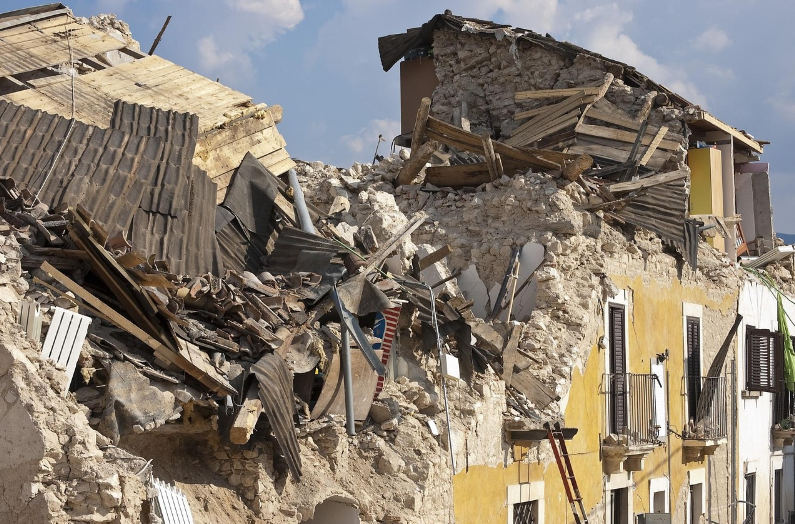Location: Bandar Abbas, Hormozgan Province, Iran
Byline: Richard, News Desk – gigablend.xyz
A strong 6.3-magnitude earthquake struck southern Iran in the early hours of Saturday morning, sending powerful tremors across multiple provinces, disrupting infrastructure, and triggering emergency protocols throughout the region. The quake’s epicenter was located 35 kilometers west of Bandar Abbas, the capital of Hormozgan Province, and occurred at a shallow depth of 10 kilometers, significantly intensifying its destructive potential.
The earthquake struck at approximately 03:27 AM local time, catching thousands of residents off guard while they slept. Iran’s Seismological Center and the United States Geological Survey (USGS) both confirmed the seismic event, noting that the shallow depth likely contributed to the severity of surface shaking experienced across southern Iran.
Full event details and real-time updates are available at the USGS Earthquake Hazards Program.
The tremors were reportedly felt in the provinces of Hormozgan, Kerman, Fars, and even in coastal regions bordering the Persian Gulf, including parts of Oman and the United Arab Emirates, although no damage was reported outside Iran.
| Detail | Information |
|---|---|
| Date & Time | June 21, 2025 – 03:27 AM (Local Time) |
| Magnitude | 6.3 Richter Scale |
| Epicenter | 35 km West of Bandar Abbas, Hormozgan Province |
| Depth | 10 km |
| Areas Affected | Hormozgan, Kerman, Fars, UAE, Oman |
| Reported Injuries | Minor injuries, dozens treated |
| Infrastructure Damage | Buildings damaged, power outages, cracked roads |
| Emergency Response | Red Crescent & National Rescue Units Deployed |
Infrastructure Disruption and Civilian Panic
Eyewitnesses described a scene of panic and confusion as homes swayed, windows shattered, and residents fled buildings in haste. Early damage assessments by provincial authorities and the Iranian Red Crescent Society indicate:
- Partial or complete collapse of dozens of older structures, particularly in rural districts near the epicenter.
- Temporary power and mobile network outages across Hormozgan and adjoining regions.
- Surface cracking observed in main highways and arterial roads.
- Water supply systems disrupted in several towns.
- Dozens of individuals treated for minor injuries, with some transported to hospitals in Bandar Abbas and Minab.
While there have been no confirmed fatalities at the time of reporting, authorities are still assessing inaccessible areas, especially remote mountain villages where road access has been severely compromised.
Emergency Response
In a prompt response, Iran’s National Crisis Management Organization initiated a full-scale emergency operation. Rescue teams, medical units, and heavy machinery have been deployed from Shiraz, Kerman, and Bushehr to assist in search, rescue, and debris clearance.
The Iranian Red Crescent has set up emergency shelters, distributing tents, drinking water, blankets, and essential supplies to the displaced population. Helicopter surveillance missions are underway to evaluate isolated villages for structural damage and casualties.
Iran’s Interior Minister issued a statement early Saturday, assuring the public of the government’s commitment to provide swift aid and support. “All state and provincial agencies are working in coordination to stabilize the affected areas and ensure public safety. We urge citizens to remain calm but vigilant as aftershocks may continue,” he said.
Why Earthquakes Threaten Iran’s Southern Belt
Iran sits atop several active tectonic fault lines due to the convergence of the Arabian Plate and Eurasian Plate, making it one of the world’s most seismically active regions. Hormozgan Province, in particular, lies along the Zagros fold-and-thrust belt, known for its frequent but often devastating seismic episodes.
In recent decades, Iran has experienced multiple high-impact earthquakes, including the 2003 Bam earthquake (magnitude 6.6), which claimed over 26,000 lives, and the 2017 Kermanshah earthquake (magnitude 7.3), which killed more than 600 people. These incidents continue to raise critical questions about the nation’s infrastructure resilience, especially in rural and economically challenged regions.
Despite gradual improvements in building codes and urban planning in cities like Tehran, Isfahan, and Mashhad, structural vulnerability remains high in older towns and villages where construction often predates modern safety standards.
Preparedness, Policy, and Public Safety
The current event has reignited the conversation around national disaster preparedness. Several civil engineers and policy experts are urging Iranian authorities to invest in:
- Nationwide structural retrofitting programs for aging buildings
- Earthquake-resistant public infrastructure
- Real-time early warning systems
- Public education campaigns on emergency response training
In an official address, Iran’s President Ebrahim Raisi called for a long-term seismic safety audit across all high-risk provinces. He also praised first responders for their rapid mobilization and professionalism.
International Monitoring and Regional Implications
The earthquake also caught the attention of regional seismic monitoring agencies in Qatar, Saudi Arabia, and the UAE, where light tremors were registered. While the epicenter remained confined to Iranian territory, the transboundary nature of seismic waves highlighted the importance of cross-border disaster coordination in the Gulf region.
So far, there have been no tsunami alerts issued by the Pacific Tsunami Warning Center, as the quake occurred inland and lacked the underwater dynamics required to trigger such events.
A Cautionary Reminder of Nature’s Unpredictability
The 6.3-magnitude earthquake in southern Iran is yet another reminder of the country’s geophysical volatility. While this event may not rival past disasters in scale, it underscores the urgent necessity for comprehensive disaster risk reduction policies, better urban planning, and continuous community preparedness.
As aftershocks continue and rescue operations unfold, the full extent of damage will become clearer in the coming days. What remains certain, however, is that seismic resilience must be a top national priority.
